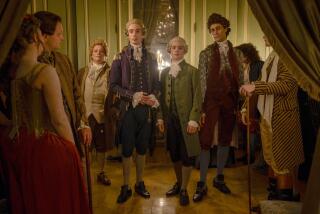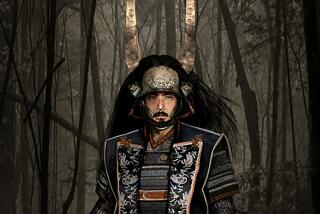Monotone Menswear
- Share via
THE MOVIE: “Mister Johnson.”
THE SETUP: The story, based on Joyce Cary’s 1939 novel, is set in colonial Africa circa 1923. It involves West African Mister Johnson (Maynard Eziashi, pictured at right) and his relationships with his changing country and his British superiors, Harry Rudbeck (Pierce Brosnan, pictured at left) and Sargy Gollup (Edward Woodward).
THE LOOK: These particular British colonialists dress with dash in the African bush, even if the palette is mostly khaki. Their wardrobes include safari jackets, pith helmets, knit ties and striped braces. It doesn’t hurt that Pierce Brosnan’s Rudbeck has the GQ physique to carry off cumbersome wool jodhpurs, tall riding boots and open-necked shirts--again, all in khaki. Mister Johnson’s trademark three-piece white linen suits, which are actually cream color for the film’s lighting purposes, highlight the character’s inability ever to be a real Brit, even though he gives it his best try. Costume designer Rosemary Burrows, who also created costumes for the film version of E. M. Forster’s “Passage to India,” strived for historical accuracy in her designs, including the caftan-like clothing worn by the African men and the yards of fabric wrapped around the women.
THE SOURCES: The men’s shirts and Mister Johnson’s suits were custom made. Most everything else, including Mrs. Rudbeck’s (Beatie Edney) luscious white cotton floral-print dresses, were the real thing--antiques rented from British costume houses. The fabric for the Africans’ clothing was bought in Britain and sent to Nigeria, where it was dyed such hues as indigo and rust, then distressed and faded to look old.
THE PAYOFF: The dashing khakis and desert whites worn by British colonials, male and female, prove to be among the most pleasing period looks in the history of fashion.
More to Read
Only good movies
Get the Indie Focus newsletter, Mark Olsen's weekly guide to the world of cinema.
You may occasionally receive promotional content from the Los Angeles Times.










